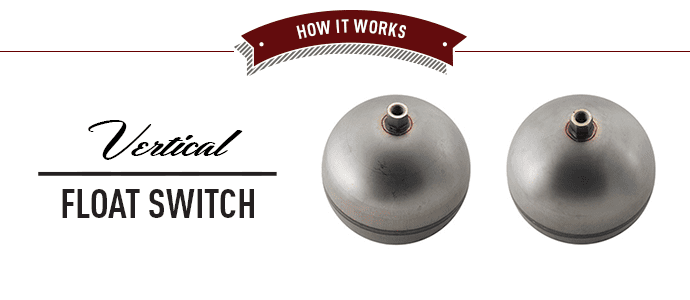
A vertical float switch is a mechanical device used to detect the level of liquid within a tank, and trigger an event, such as a refill or discharge, when the liquid reaches one or more predetermined levels. A vertical float switch comprises a magnet contained within a thru tube float, as well as a magnetic reed switch contained within a fixed housing. The movement of the float, due to the changing liquid level, will cause the reed switch to close or open at a particular level. This tried and trusted technology is based on a relatively simple design that offers long term reliability without the need for the user to operate the switch. Below we discuss five common ways the vertical float switch is used.
- Harvesting Rainwater – Harvesting rainwater is becoming increasingly more important, especially in areas of drought. Climate change is affecting water supplies everywhere with long dry spells. Numerous states are in a major water deficit, and the need to collect, store, and treat rainwater is necessary. The storage tanks used to collect the rainwater require vertical float switches to indicate the level in the tank and control pumps and valves. Not having these controls can lead to costly water loss, and property or equipment damage.
- Water Wells – Many homes today still use a well as a primary water source. Activation and deactivation of the well pump is typically controlled through the use of vertical float switches. Typically two float switches are used, one near the top of the tank breaks the electrical connection to the pump when the water level gets too high. Another placed towards the bottom of the tank closes to create a connection to the pump when the water level drops down too low. Together these switches keep the tank filled and also prevent the well pump from turning on too often.
- Dishwasher – Did you know an everyday home appliance such as a dishwasher contains a vertical float switch? In most dishwashers, the float switch acts as a backup to the fill timer. If the timer does not work properly, the switch shuts off the water before the dishwasher overflows. As water fills the dishwasher, the float rises. Once the float reaches a certain point, it triggers the switch, which in turn sends a signal that stops the water from entering the dishwasher.
- Boiler – Boilers are relatively simple machines that can be used for a variety of purposes. It is commonly used as a heating source for buildings and homes. For most if not all boiler configurations, vertical float switches are absolutely essential to their proper and safe function. Applications for float switches in boilers include high water level alarms to prevent overflow, low-level cutoff to prevent damage to the boiler system, and pump controls for boiler feed water.
- Fish Tank – Vertical float switches can also come in handy with your fish tank or aquarium. Evaporation causes problems in aquariums. When water evaporates, it leaves salts behind, increasing the salinity of the existing water. Saltwater fish need water chemistry to remain stable, and increasing the salinity too much can kill fish. Topping off the tank with purified fresh water can fix this. A top-off system consists of a vertical float switch wired to a water pump that’s connected to a reservoir of purified fresh water. When enough evaporation occurs, the switch closes, and the pump turns on. This pumps water into the sump until the float switch opens, deactivating the pump. This allows the aquarium to top itself off, avoiding changes in salinity.
In summary, the vertical float switch is an ingenious water level indication tool that acts as both a safety measure and as a source of convenience. It is an extremely versatile device, used in many common applications!




